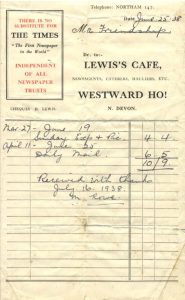Friendship footprints in Westward Ho!
A brief background by Robert Friendship
Friendships or Friendshipe have lived in and around Devon since first recordings in the mid fifteen hundreds. Up until the late 1800’s they were employed in the agricultural way of life. Resting places are Torrington, Hatherleigh, Frithelstockstone, Bideford old town churchyard, Northam & in the USA & Australia.
My grandfather, Walter George, born 5 Honestone St., Bideford, served an apprenticeship, in Newton Abbot, and qualified as a dentist in the early 1900’s.
In 1921 he purchased 4 Queen Anne’s in Bideford High Street where he set up his business and in 1930 he brought his wife, Evelyn, and five children, Douglas, (b.1912), Babs, Jack, Joyce and Roy, to their new home built (1929-30) on Atlantic Way, & known as Thorndale.
Below: “Thorndale” & the simple quote to build.
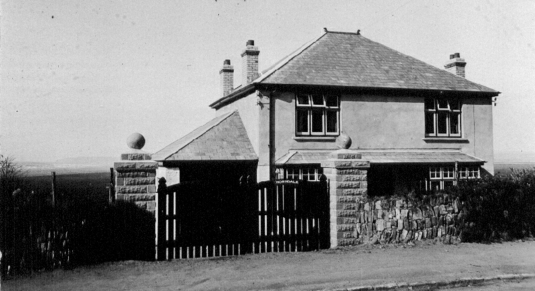
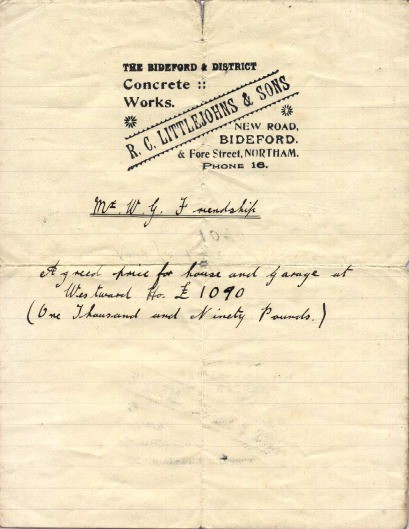
William Charles Friendship, brother and 3 years senior to Walter, had a home on Golf Link Road known as Ridgeway. He is credited with assisting in the installation of the new sea wall at Westward Ho!.
He and a business partner built the row of bungalows opposite the cricket ground. These dwellings were built as holiday lets and Walter owned two, referred to as “Sunnyside” and “Summersdale”. He would bring his family to stay when there was an opportunity and if the property had no bookings.
William owned The Moose Hall and “Friendships’ Cafe” in the market place, Bideford. The Cafe building has been modernised in recent times and a sign bears the name “Friendship House”.
It is likely that William suggested that his younger brother, Walter, have Queen Anne’s for the proximity to Bidefords’ business hub, the market place.
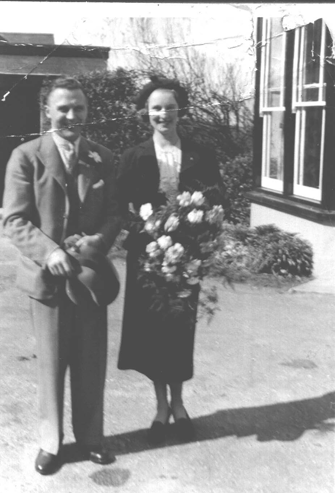 Jack Friendship, younger brother to Douglas, had a shop, “The Supply Stores”, on Atlantic Way just opposite to the old peoples’ home then known as “Sunset”. He and his wife, Edna, ran the shop and had one daughter, Sally (b. 1949)
Jack Friendship, younger brother to Douglas, had a shop, “The Supply Stores”, on Atlantic Way just opposite to the old peoples’ home then known as “Sunset”. He and his wife, Edna, ran the shop and had one daughter, Sally (b. 1949)
Roy Friendship became a shop keeper, in Northam. His premises, selling provisions, were opposite the Kingsley pub.
Babs Friendship (Gambling) eldest daughter, moved to Chichester..
Joyce Friendship (Pearce) lived in Exeter.
Douglas Friendship, (my father) married Winifred Marion Bishop of London on March 27th. 1937 in Northam Parish Church and the reception was help at Rockingham, next door to Thorndale and which is now a home for the elderly.
They had two children, Martin (b. 1939) & Robert (b. 1949) Martin emigrated to Australia in 1968.
Robert lives with his wife Janet in Northam.
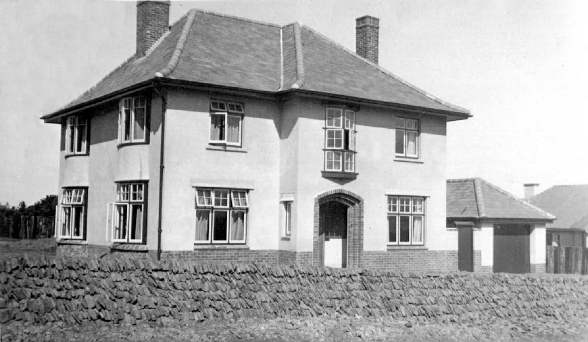
“Rotherdene”, above, the house my father had built, in Beach Road, in 1936. The builder was Adrian Beer, the sum was £1,700.
Douglas qualified as a dental surgeon at Guys’ Hospital in 1935 and became a junior partner of his fathers’ business in that year. In late 1939 Walter passed away as a result of Tuberculosis which had led to his early demobilisation from The Royal Flying Corps sometime in 1916.
As a sole surviving partner, Douglas was not obliged to join the forces at the start of World War 2 but joined the army dental corps in 1940 leaving his practice to be run in his absence. At the end of hostilities he was refused demob for a further year, an unfortunate occurrence as his practice had been badly run during the war years and there was a sore need for dentists (and doctors) in Bideford.
I enquired how patients were charged in pre-National Health Service days. My father told me that, since the background of the patients was well-known, charges would apply accordingly. Thus an individual on low wages would pay a very small sum, (or even none at all) whereas higher charges were applied as deemed appropriate.
Extras
My father, Douglas, had a keen interest in garden birds. In the early days at Thorndale he became friends with Jack & Agnes Galliford who lived almost opposite at Codrington Cottage.
Jack had worked at Stents Garage in the village and before that at the Gas Works at the bottom of Avon Lane, where he had been burnt in an accident as a young man.
Jack kept homing pigeons and before long my father, then in his teens, was given, by his mother, an old beach hut acquired for £5 where he kept a few pairs of birds given to him by Jack. They decided to become partners, “Galliford & Friendship”, and belonged to the Bideford Homing Society.
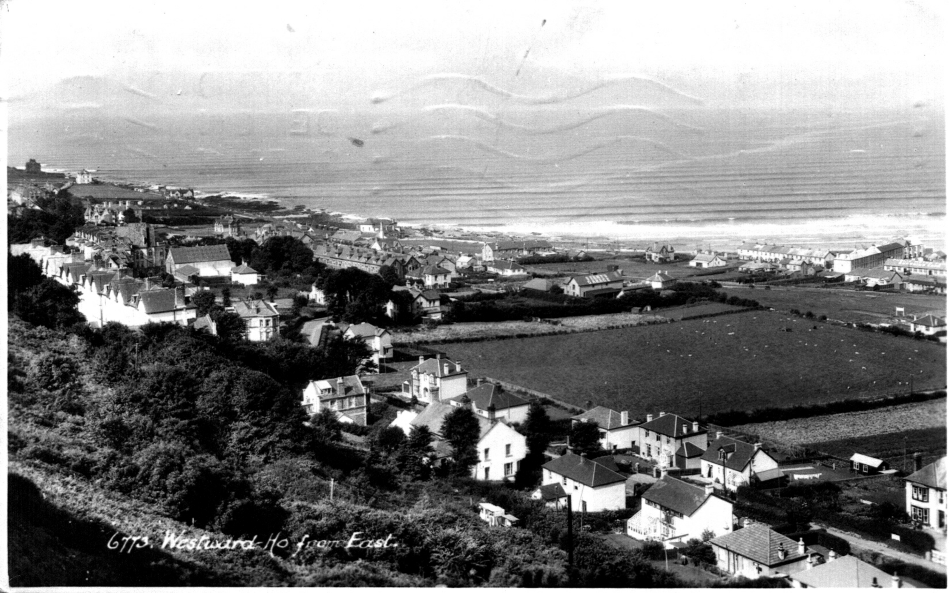
A postcard view of the village where, in the centre foreground, can be seen Jack’s loft. Enlarged, it looks possible that Jack can be seen outside the loft.
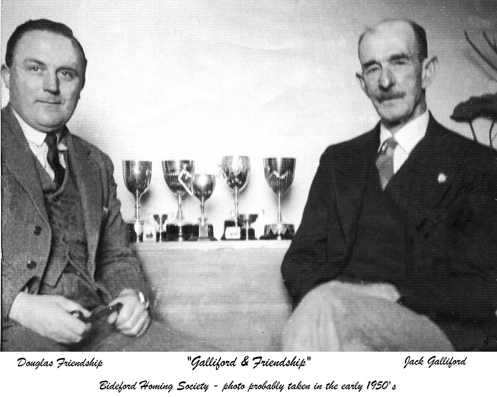 Jack came to Rotherdene on Wednesdays to assist in the upkeep of the garden. He did similar work at “The Priory”, the large house opposite Link House.
Jack came to Rotherdene on Wednesdays to assist in the upkeep of the garden. He did similar work at “The Priory”, the large house opposite Link House.
I’d like to include a couple of early photos, from my fathers’ album, showing the layout of the fields behind his fathers’ house on Atlantic Way. These fields were the property of Mr. Wilkey.
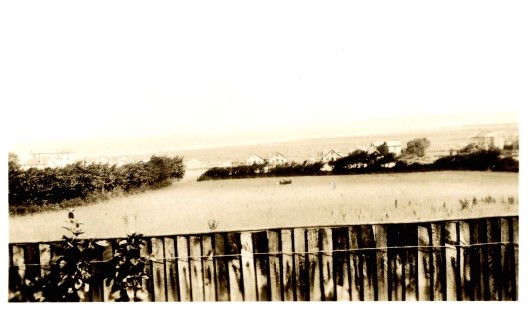
Fields behind Thorndale, both taken about 1932. The Pebbleridge Hotel is at extreme left and, at right, Eastbourne Terrace.
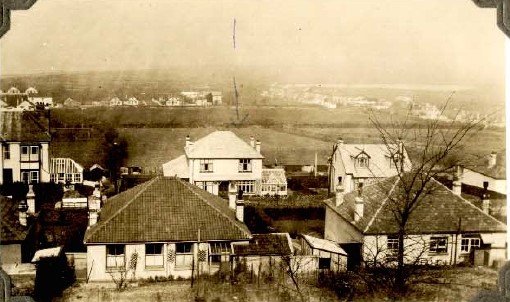
And again, Thorndale being arrowed.
Miss Figgess, St. Christopher’s School, Venton Drive.
Looking through various family documents I have found an account for my elder brother, Martin, who attended the above-mentioned school run by a Miss Figgess.
My brother verified that this was in a bungalow situated in Venton Drive.
He explained that it was the third bungalow from the Burrows end, and on the right-hand side (as was then).
Here is one of three accounts:
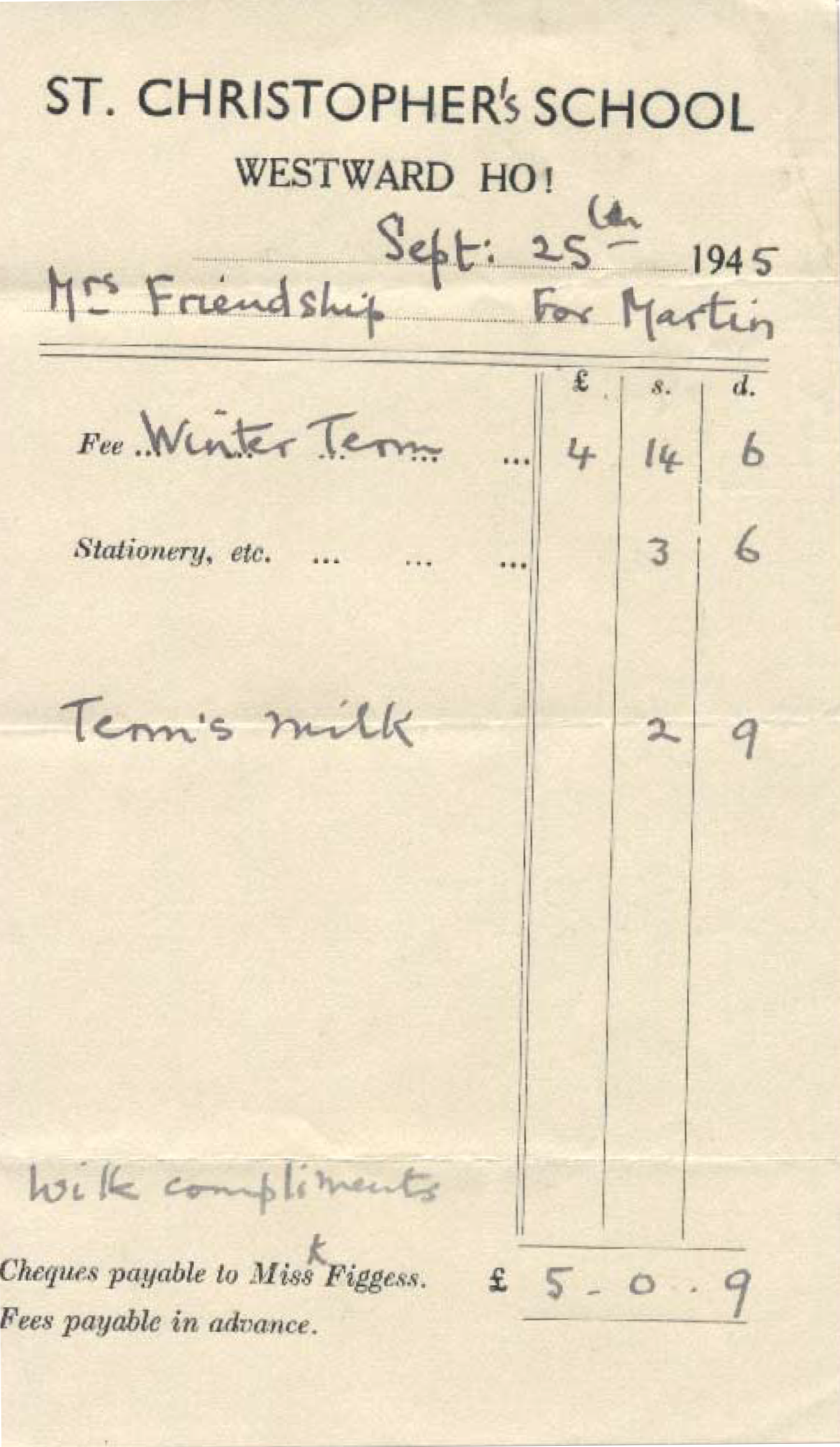
Summing up
Before finishing this article, I wanted to mention Florence Dunn.
“Florrie”, a spinster, lived with her brother and his wife near the bottom of Beach Road opposite the house where my first friend, Michael Braund, lived.
She would come to Rotherdene on three half days a week to help with housework and would also sit with me on evenings when my father & mother were out.
Florrie moved out of her brothers’ home in the late 50’s and took a caravan in Mr. Baines’ caravan park, the Torville Camp.
I recall that she also did similar work for Dr. Francis who lived in a bungalow opposite Nelson Terrace.
Growing up in the village in the ‘50’s and ‘60’s, Westward Ho! could be a dismal place during winter but came alive during holiday time with factory workers from the Midlands & beyond pouring down to stay at the various camp sites, Braddicks and Taylors to name but two. I remember it as a happy place with many adventures across the Burrows and up on the Tors.
The army camp provided considerable interest as it was just around the corner from Beach Road. On one occasion, returning from an exercise in the sea, Michael Braund and I were given a lift up inside one of the LVT’s (Buffalo I recall). Exciting!
Paper bill, 1938
